Book Review and Giveaway: The Third Plate
Where We Began is not Really Where We Began
The classic (North) American meal: a delicious, mouth-watering plate with a big piece of meat, preferably cooked on the grill, a potato or hunk of bread or ear of corn, and some small side of vegetables, like carrots or something else that most people like.
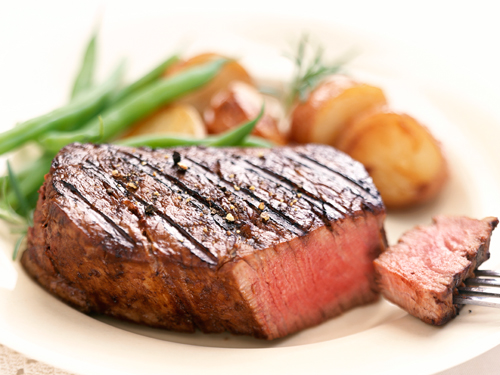
Photo from Men’s Health .
And what does that meal look like when it’s growing? Most likely it looks like an endless monoculture of grains being grown to fatten a cow stuffed into a huge feedlot with thousands of its kind. The small amount of vegetables in this meal are also grown in a huge monoculture, and are harvested by machine or underpaid laborers. Is this meal and its production rooted in tradition?
Maybe the tradition of the last 50 or 60 years, but not a tradition based on what the Earth truly produces and has historically produced.
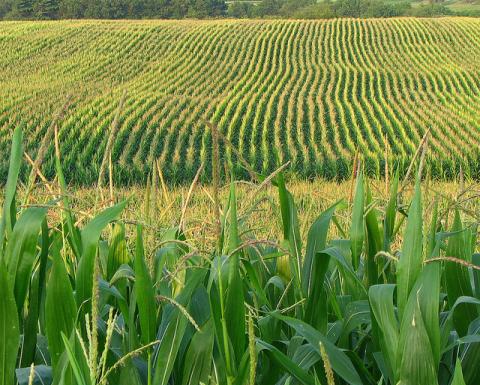
Photo from Awesome Stories
It is an achievement of human ingenuity, this ability to reduce nature down to the simplest parts in order to lower cost, increase efficiency, and level the playing field so that all of us in North America can eat the way we’ve been told is best.
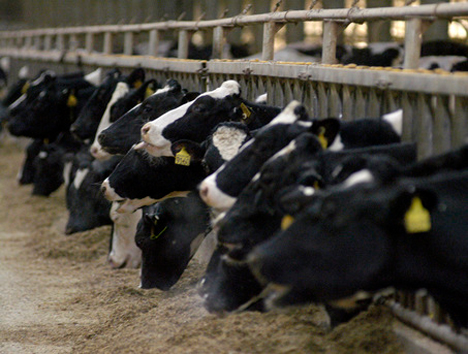
Photo from MFA Blog
In the last 10 or so years this has been called into question. As a response the second plate we were served had a strong resemblance to the first, but the way it was grown was completely different.

Photo from LeftCoast GrassFed
The monocultures—single crops grown as far as the eye can see—were removed from the picture in favor of pastures for the animals to graze. The vegetables grown for the meal were heirlooms, bred for their flavor, not just shelf-appeal. They were grown by farmers we could name, on farms that didn’t stretch as far as the eye could see.
And this Second Plate was a good change. It was accompanied by other positive changes.
One Plate, Two Plates, Three Plates, New Plates…
All over Canada and the US farmers’ markets have been on a resurgence . Influential books like The 100-Mile Diet , The Omnivore’s Dilemma , and Animal, Vegetable, Miracle have popularized seasonal eating and questioning food sources. Blogs like, um, this one, have focused on what eating local food all year long looks like.
And yet for Farm-to-Table Chef Dan Barber this change was not enough.
Which is why he put together a third plate of food. His idea for this meal was to invert the old by featuring a large portion of vegetable—originally imagined as a carrot steak—with a sauce made from second, lesser-used cuts of meat. And this idea became the starting place for Barber’s new book The Third Plate: Filed Notes on the Future of Food.
I actually finished the book over a month ago but have felt like I needed time to reflect on it and internalize it.
And ultimately I think I’ve felt a bit intimidated. This book is an achievement. It is the memoir of a chef who is never content to just sit back and cook. It chronicles his journey from “farm-to-table” all the way to an imagined truly sustainable future of food. And it is clearly a work of passion. For this reason I think I have been a bit afraid to tackle this review.
But I was so excited about the book when I started reading it that I asked the publishers for a giveaway copy and they obliged me. Thus I find myself needing to finally sit down and write about this book.
Let me start by saying if you care about the future of food you should read this book. Furthermore, you should read this book if you care about the current state of our planet and its future.
But in spite of me recommending that you read this book I’m not left completely satisfied by the book. My main criticism is that Barber is somewhat withholding when it comes to his actual cooking. He describes many foods he makes but never elaborates about how home cooks can actually make them.
Even with the power of the internet it’s hard to find very many of his recipes, at least with casual searching. I found a few but it was unclear if they were actually his or just from his restaurant, Blue Hill.
Still, I enjoyed the book and found it quite impressive. Divided into four sections—Soil, Land, Sea, Seed—there is a natural flow that follows Barber’s own journey from serving local food at his famous Blue Hill Restaurant to working to understand and incorporate food that is best for the earth.
As the book progresses, following Barber over several years of journeying to farms and around the world, his emphasis shifts from his original simple interpretation of a third plate to a much more holistic approach. He begins to see how the role of a chef is not to demand the best produce and meat from farmers and fisherman, but to learn what is best for them to grow and harvest and then determine how to use that food.
For me this is a great challenge. I’ve often been critical of this model of eating because I know it’s not in line with the way consumers want to eat or shop for food. It’s certainly true for me and my family—we make a meal plan based on what we think we can find locally, then shop at the market for the food. Joining a CSA has inverted our meal planning by forcing us to wait and see what our farmer has grown for us. Then we go home and try to come up with a plan for how to use all the food.
This is where the role of innovative chefs like Dan Barber are so important. By taking the idea of a CSA—supporting a local farm by committing to buying their produce for a whole season, regardless of how the season goes and what is produced—and focusing on how to create new dishes and meals from that food, a new cuisine is being created. It’s not just about local food, but about sustainable food.
And this brings me back to my main criticism, which is that I’d like to see some recipes. Luckily I found a few (see them pinned here), but I can only hope that someday Barber blesses us with a whole book of his Third Plates. In the meantime I’ve started a pinterest board called “Third Plates.” Email me if you would like to be added to the board as a contributor.
So Who Defines the Future of Food?
Ultimately it is not just Barber’s role—or the role of any famous farm-to-table chefs —to define the new menu of the future, but ours. We the consumers who support local food producers need to engage in conversation more with them to find out what they can produce best with their land. Then we decide what to do with that food.
Within our communities we can share our ideas and recipes. Within our larger regions we can join online conversations and blog about what to do with our local foods. We can let our locality answer the question of what to eat.
Should we be eating meat? Maybe that depends on whether the local geography and ecology are best suited for producing meat. Should we be eating wheat? Same answer. This is probably too simplistic, because it’s hard to ask people (myself included) to change their diet and limit it to what the land can best support.
But if we don’t do this our descendants in the future will be forced to do so. Someday the land will no longer support the diet of the First and Second Plates. And then the Third Plate will be forced upon us. And if that’s the case there may not be time to develop a new delicious culinary tradition.
Thanks to Penguin Press one reader in Canada can enjoy a copy of The Third Plate. And if you don’t win find it at your library or your local book store! Penguin Press also generously provided me with a review copy, thank you, Penguin!

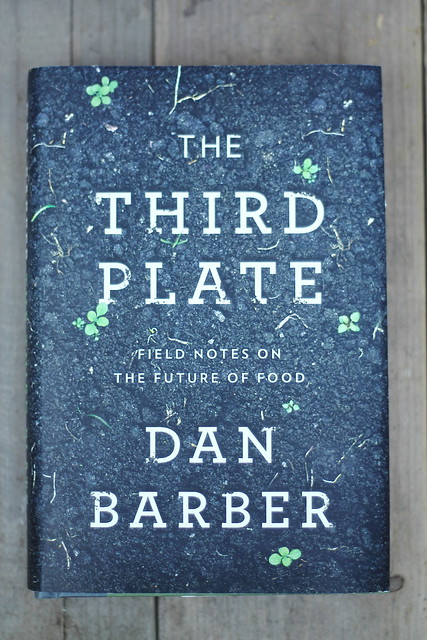
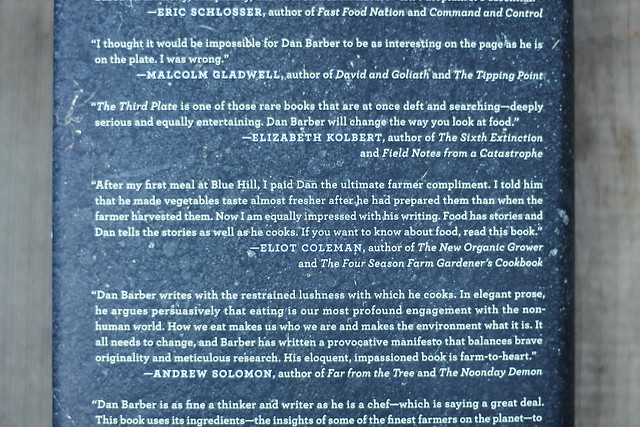
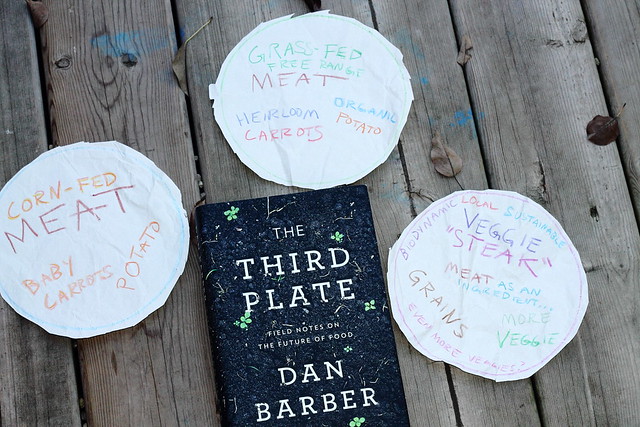
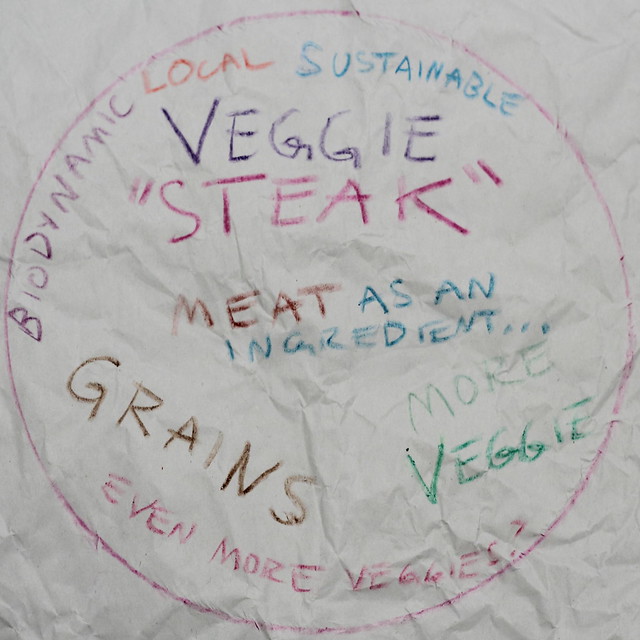

October 3, 2014 @ 12:34 pm
Thanks for this review, Jon! I have wanted to read this book and now I look forward to it even more! I like your idea of including recipes, much like one of my all time favourites, Animal, Vegetable, Miracle by Barbara Kingsolver. I think including recipes can provide an interesting link between the academic and the practical.
October 7, 2014 @ 8:47 am
Well said about the connection between the academic and practical!
October 3, 2014 @ 4:14 pm
I would have to say my favourite food book is probably Michael Pollan’s Food Rules simply because of how simplistic and attainable his message is. While 100 Mile Diet was probably the most influential to me personally because it was the first monumental food book I read as a young adult, newly in control of all my own food choices, it seems beyond the grasp of many people but Food Rules seems more “moderate” for many readers.
October 7, 2014 @ 8:47 am
Hey Katrina,
I agree with you about both books – 100 Mile Diet is about as far to the local eating extreme as you can go whereas Food Rules is more easily applied. Thanks!
October 4, 2014 @ 10:14 pm
Sounds like a really interesting book. Will look for it at my local library.
Sandra
October 7, 2014 @ 8:08 am
I think my current favourite food book is Nom Nom Paleo – its a recipe book but she also does such an amazing job of making healthy eating easy and accessible. It really has renewed my love for cooking!
October 7, 2014 @ 8:48 am
Cool, I’ll check it out! Thanks Alex.
October 13, 2014 @ 11:35 pm
This seems like an interesting read. I was exposed early in my cooking career by my chef who was the godfather of Farm to Table.
Way before his time.
Thanks for the review.
Recipes would be definitely something he should have considered better.
Kim
http://www.the5oclockrush.com
Kim Teasdale recently shared… Weekday Wrap Up 7 and BlissDomCA